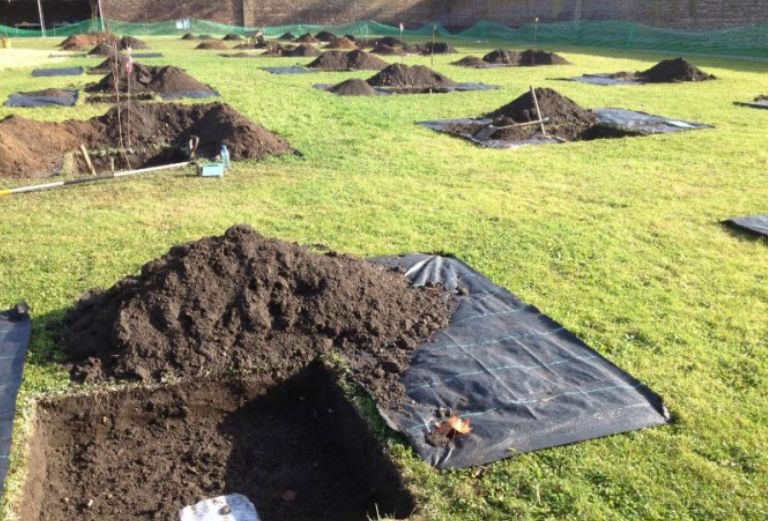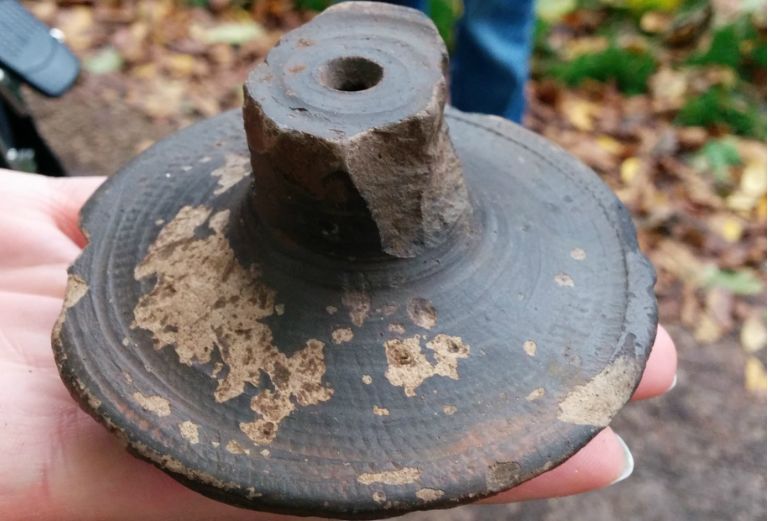
by Lucy Hart, head gardener
Let me explain about the very deep holes that have been dug for our new orchard in the walled garden. On a first glance the metre deep by metre wide holes seem somewhat too large to plant a tree, and that would be very true.
Why an archaeological dig?
Fulham Palace is a Scheduled Monument which means below ground is protected by Historic England due to the extraordinary and sensitive archaeology it holds.
The walled garden has very well drained soil due to its proximity to the River Thames. It is what’s know as river terrace soil – water drains very freely through it and it dries out quickly after rain. In order to grow an orchard with horticultural promise and longevity we needed to have our apple trees grafted on a rootstock that would withstand these more extreme soil conditions. Rootstocks are what apple varieties are grafted onto and influence the growth habit of the tree. The semi vigorous rootstock MM106 is the best rootstock for poorer soils. However, by using it, we run a greater risk of penetrating archaeology with the roots than with a less vigorous rootstock such as the semi dwarf M26 or dwarf M9. Therefore Historic England agreed to the orchard under the condition that we dug 90cm deep holes and lined them with a permeable fabric – one that will not allow any adventurous roots to go any deeper into the roman depths of soil.
So the deep pits you see are those that have been archaeologically investigated before being planted, and some fascinating finds have been revealed. The finds include a roman pot lid still intact, indicating possible Roman domestic activity, a Tudor coin, a Roman coin, and a blade from the stone age. Thank you very much to all the archaeological volunteers that helped investigate the pits supervised by Pre Construct Archaeology.
